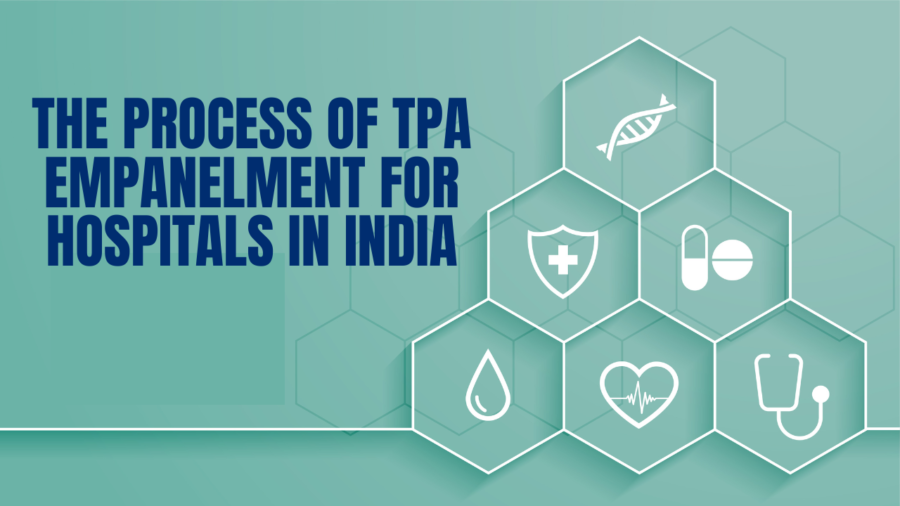Third-party administrators (TPAs) are health insurance companies that provide administrative services to hospitals in India. The process of TPA empanelment is the process by which a hospital becomes a member of a TPA’s network.
In order to become a TPA, a hospital must meet certain criteria and go through a rigorous application process. The process of TPA empanelment is long and complex, but it is essential for hospitals in India to become TPA in order to be able to provide the best possible care for their patients.
1. What is TPA empanelment?
TPA empanelment is the process of the hospital being registered as a member of a TPA network. The TPA network is the network of health insurance companies that are authorized by the Insurance Regulatory and Development Authority (IRDA) to provide health insurance services in India.
In order to become a member of a TPA, a hospital must first meet a set of criteria that requires, among other things, all medical personnel to be qualified and experienced medical professionals, and all beds, wards, and equipment to be of an acceptable quality and standard. The hospital must also have its own legal and financial paperwork in order and must be able to provide proof of good financial records.
Once these criteria have been met, the hospital must then complete and submit an application for TPA empanelment. The application will then be reviewed and evaluated by the TPA, which will consider the information provided by the hospital. Once approved, the hospital will become part of the TPA network.
2. Why is TPA Empanelment important for Hospitals?
Having TPA empanelment gives hospitals access to the TPA’s reimbursement system, allowing them to get reimbursed from the insurance companies that are part of the TPA’s network. The process also encourages hospitals to maintain standards of quality and accountability.
In addition, the TPA empanelment gives the hospital access to a network of medical providers, laboratories, and other essential medical services and products that are available with the TPA network. This gives hospitals access to a wider range of resources and allows them to focus on providing quality care to the patients.
Finally, being part of the TPA network increases the visibility of the hospital among insurers and healthcare providers which leads to increased business. This improves the financial prospects of the hospital and allows it to be better able to support its operations and services.
3. The process of TPA empanelment
The process of TPA empanelment includes the following steps:
- Requirement Submissions: The insurance company evaluates the hospital to ascertain its eligibility criteria with the help of its TPA. This includes the submission of various documents, such as the hospital’s qualifications and its equipment, services, and experience.
- Cost Negotiations: Once the requirements are completed, the hospital and TPA negotiate the service charges for different treatments that the hospital may have to provide.
- Agreement and Approval: Once the costs have been agreed on, the hospital and TPA enter into an agreement for the services that will be provided to the insured person. The agreement is submitted to the insurer for approval.
- Implementation: After the agreement has been approved, the hospital and TPA implement the agreement and begin to provide the services to the TPA-insured individuals.
The process of TPA empanelment is an important step for hospitals to access the reimbursement system of TPAs and increase their visibility to healthcare providers. It is important to make sure all required documents are in order and that the agreement is agreed upon before commencing the TPA empanelment process.
4. What is the process of TPA approval?
Once the TPA empanelment process is completed, the hospital needs to be approved/authorized by the TPA to avail the health insurance services from the TPA provider. When the hospital signs a contract with a TPA provider, they become approved by the provider.
In order to become authorized, the hospital agrees to the terms of the TPA provider and agrees to provide services at a pre-determined cost to the insured person.
The process of TPA approval involves the following steps:
- TPA Verification: A TPA must verify the hospital’s credentials, such as its staff, facilities, qualifications, and services offered in accordance with the requirements.
- Pricing Negotiations: The TPA must negotiate the cost of the services that the hospital provides.
- Compliance: The TPA needs to ensure that the hospital is compliant with the various accreditation standards that the TPA has prescribed for its network of hospitals.
- Quality Control: The TPA must ensure that the hospital maintains a high standard of quality care. This includes regular quality assurance check-ups and patient feedback.
- Final Approval: Once all the concerns are addressed, the TPA will grant final approval to the hospital to become part of its network.
5. The benefits of TPA empanelment
Empanelment with a TPA provider offers a multitude of benefits to the hospital. The most significant of these are as follows:
- Low Cost: Hospital administrations can save on costs due to the services being provided at lower costs when compared to other healthcare service providers.
- Access to New Patients: TPA empanelment gives the hospital access to a large network of insured individuals, thus increasing the hospital’s patient pool.
- Improved Quality of Care: TPA providers periodically review the quality of care being provided by the hospital and provide corrective measures as needed. This ensures that the healthcare facilities maintain quality standards.
- Addressing Insurance Constraints: TPA providers help the hospital navigate through insurance constraints and agreements related to providing healthcare services.
Ultimately, TPA empanelment provides hospitals with a number of advantages and helps the hospital reduce costs and improve the quality of the healthcare services provided.
6. Conclusion
TPA empanelment is a beneficial process for both hospitals and patients alike. Hospital administration saves costs and maximizes profits due to medical services being provided at a lower cost. Healthcare insurance companies are able to extend coverage to a wider network of people through their TPA partners.
Patients benefit due to healthcare insurance companies being able to provide coverage and services that they may have not been able to receive otherwise. Additionally, impanelled hospitals can provide better service due to the standards that TPA providers ensure are maintained.
For TPA empanelment to be successful, hospitals must be aware of all the requirements and the process that needs to be followed. Making sure that all the documentation is in order is critical to ensure the smooth and efficient empanelment of the hospital.
Overall, TPA empanelment is a beneficial process, and if followed through properly it can be extremely successful for both the hospital and the insurance company.


